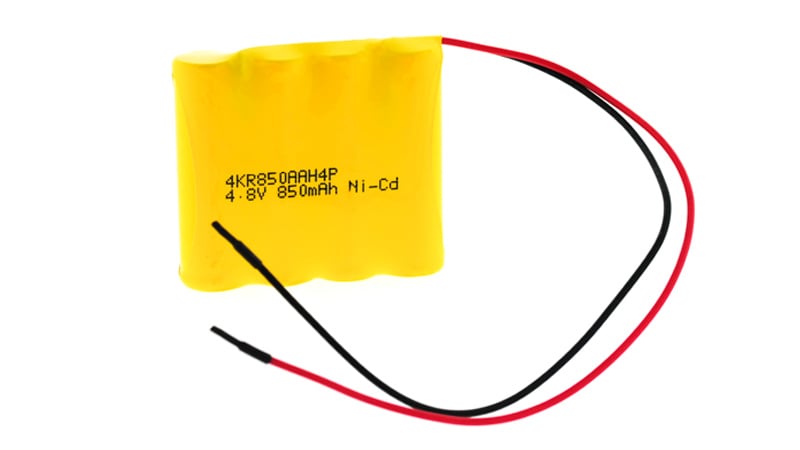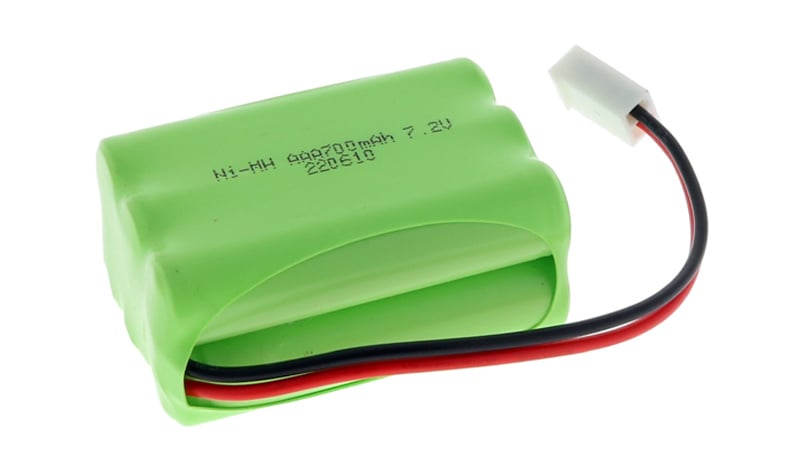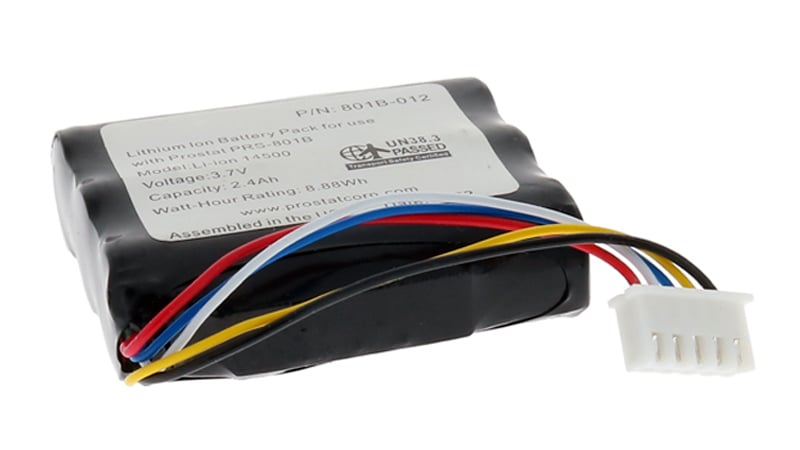When powering electronics, toys, and other devices, they may rely on rechargeable batteries to operate. Rechargeable batteries can be used repeatedly to power devices due to their ability to connect to a portable charger or be charged within the connected device. Depending on the battery chemistry, a rechargeable battery may be recharged for 500 cycles to 1,000 cycles before reaching its end of life.
There are certain times when using rechargeable batteries is ideal to use in place of single-use batteries. In this blog post we will review the different types of rechargeable batteries and when they can be interchanged.
Types of Rechargeable Battery Chemistries
Three types of battery chemistries are rechargeable: nickel-cadmium (NiCad), nickel-metal hydride (NiMH), and lithium-based batteries such as lithium-ion. These chemistries are the most commonly used for personal devices such as phones, toys, and laptops as well as in power tools, uninterruptible power systems (UPS), and other portable devices.
NiCad Rechargeable Batteries
NiCad chemistries are the oldest out of the group. They are selected for devices because they are cheap and can last for up to 1,000 charge cycles. This chemistry has a lower terminal voltage of 1.2 volts when compared to the other battery types. However, this voltage experiences very little change when reaching the end of its discharge. Some issues common with NCAD chemistries are that they suffer from memory effect, a decrease in recharge capacity due to memorizing the last discharge level.

Battery pack manufactured with NiCad rechargeable batteries.
NiMH Rechargeable Batteries
NiMH chemistries are more expensive than nickel-cadmium batteries and have 2 times to 3 times the capacity when compared to NiCad batteries. They also have a terminal voltage of 1.2 volts and can be cycled up to 1,000 times before losing capacity. While more expensive, this chemistry is often the ideal replacement for NiCad batteries due to not suffering from memory effects. NiMH has become one of the most common types of rechargeable batteries for devices that do not have high power needs.

Battery pack manufactured with NiMH rechargeable batteries.
Lithium-Ion Rechargeable Batteries
Lithium-ion chemistries are common for high-powered devices. They have a higher energy density of 3.6 nominal volts, which can reach up to 4.2 volts, and do not suffer from memory effects. The cycle time for lithium-ion batteries is dependent on their voltage per cell. High voltage chemistries of 4.2 volts have only 300 cycles to 500 cycles, while lower voltages of 3.9 volts can provide 2,400 cycles up to 4,000 cycles. While nickel-based batteries can use off-the-shelf chargers, a lithium-ion rechargeable battery requires a special charger.

Battery pack manufactured with lithium-ion rechargeable batteries.
Requirements for Rechargeable Batteries
Often, device manufacturers will list battery requirements in their user manuals or on the device itself. It is always recommended to follow these instructions when deciding whether to switch from single-use batteries to rechargeable batteries. Here are several common aspects to know when using rechargeable batteries.
Batteries Differ Between Manufacturing Brands
Seldom will battery manufacturers have the same chemistry for their cells when compared to other companies. This factor can create different capacities and recharge requirements for battery cells based on brand. For this reason, you should never mix different battery cell brands into the same device at the same time.
Also, you should never mix different brands of batteries when recharging them in the same charger at the same time. Instead, stick with one brand and their cells for the device. When selecting a new brand of battery, switch out all the old cells for the new brand.
If you are using nickel-cadmium batteries and want to switch to another chemistry, you may replace them with nickel metal hydride batteries as they have the same voltage. Also, you can replace most alkaline batteries with nickel-based rechargeable batteries such as NiMH chemistries. The only times when you do not want to replace alkaline with rechargeable nickel-based batteries are when using low-drain devices such as smoke detectors and clocks, or for emergency kits that will be in storage for long periods. If using high-drain devices, a rechargeable battery can provide longer power and will be more cost-effective than constantly replacing single-use batteries.
Typically, you cannot replace NiMH batteries with lithium-ion batteries. Lithium-ion batteries have a different shape, size, and capacity. On the rare occasions when a NiMH can be replaced with a lithium-ion battery, the device will provide this information either on the label or in the user's manual.
Match Compatible Chargers to Battery Chemistry
When selecting a charger for replaceable batteries, you want to select a charger model based on the voltage and chemistry of the batteries. You want to avoid charging a NiMH rechargeable battery using a NiCad battery charger and vice versa. Most lithium-ion batteries come with their special chargers from the manufacturer. You should also use this charger for this battery chemistry. If you use the wrong charger, you may end up damaging the battery cells.
Dangers of Improper Use of Rechargeable Batteries
Just like with single-use batteries, you want to handle and store rechargeable batteries with care. Mishandling the batteries can damage them, impacting their capacity and how they charge. You should never leave the replaceable batteries in the charger overnight or unintended. You want to remove the batteries immediately when reaching their full charge to prevent overcharging. Only charge the battery for the recommended charge time. Never recharge old batteries, batteries that are swollen, batteries that are leaking, or ones that have other types of damage. The batteries may catch fire or explode.
You can damage batteries when mixing old rechargeable with new rechargeable batteries. This issue may lead to battery leakage, a loss in capacity, and an increase in memory effect. Also, the performance of the batteries will be impacted. Another concern is using or charging batteries in extreme temperatures.
Battery life can be shortened when using rechargeable batteries in high-temperature situations. A battery can also become warm when recharging and you may increase this temperature by charging in a hot room. Instead, you want to use, store, and recharge batteries in dry and cool places.
Summary
Rechargeable batteries can be a cost-effective solution when using high-powered devices as you can use the same battery for many years without replacement. Understanding the power needs of the device can allow you to select the right rechargeable battery. Select the battery based on the capacity and the manufacturer's requirements, then use and charge the battery carefully to prevent damage.
Key Takeaways
- Rechargeable batteries are not always interchangeable: While nickel-metal hydride (NiMH) batteries can often replace nickel-cadmium (NiCad) batteries, lithium-ion batteries usually cannot replace NiMH due to differences in voltage, size, and capacity.
- Battery chemistry determines charging compatibility: Using the wrong charger, such as a NiCad charger for NiMH batteries or an off-the-shelf charger for lithium-ion cells, can damage the battery and reduce its lifespan.
- Mixing different battery brands and chemistries is unsafe: Different manufacturers use varying chemistries, capacities, and recharge requirements, so mixing brands or chemistries in a single device or charger can lead to inconsistent performance or potential battery failure.
- Proper handling and storage extend battery life: Batteries should never be overcharged, stored in extreme temperatures, or mixed with old and new cells, as these practices can reduce capacity, cause leaks, or lead to fire hazards.
- Rechargeable batteries are ideal for high-drain devices: While NiMH and lithium-ion batteries provide cost-effective, long-term power solutions for high-power electronics, single-use alkaline batteries may still be better suited for low-drain applications like smoke detectors or clocks.
















